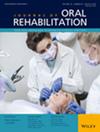Applications of Artificial Intelligence (AI) for Diagnosis of Periodontal/Peri-Implant Diseases: A Narrative Review
Abstract
Background
Artificial intelligence (AI) and various subunits of AI such as artificial neural networks (ANN), Convolutional neural networks (CNNs), machine learning (ML), deep learning (DL) and deep neural networks (DNN) are being tried to diagnose and plan treatment for periodontal diseases.
Aim
This narrative review aims to discuss the current evidence on the applications of AI for the diagnosis and risk prediction of periodontal/peri-implant diseases.
Method
A search strategy with the following keywords: (Artificial intelligence [MeSH Terms]) AND (Periodontal disease [MeSH Terms]) was used to search for articles from 2000 to 2024.
Results
AI models using patient-related data, signs and symptoms of the disease, immunological biomarkers and microbial profiles aid in effective diagnosis and planning treatment. AI is also used in periodontal diagnosis of pathological and anatomical landmarks such as cementoenamel junction, bone levels, furcation defects, nature and system of dental implants placed, degree of implant or tooth fractures and periapical pathology, assessing the severity and grading of periodontal or peri-implant disease/conditions, assessing the signs and symptoms of periodontal/peri-implant disease and determining the prognosis of implant and periodontal treatment. Studies have compared the diagnosis made by dentists and AI-based models and found AI models to be more effective and quicker in diagnosis than dentists.
Discussion
AI-based tools such as DL, ML, CNN, and ANN are more effective and quicker for timely diagnosis, risk assessment, and treatment plans for periodontal and peri-implant disease diagnosis. DL and CNN are the most commonly used tools for the diagnosis of bone levels around teeth or implants, periodontal disease staging and severity, and location of anatomical structures and teeth.
Conclusion
AI and its subsets are promising tools for the diagnosis/risk prediction and treatment planning for periodontal and peri-implant diseases.


 求助内容:
求助内容: 应助结果提醒方式:
应助结果提醒方式:


